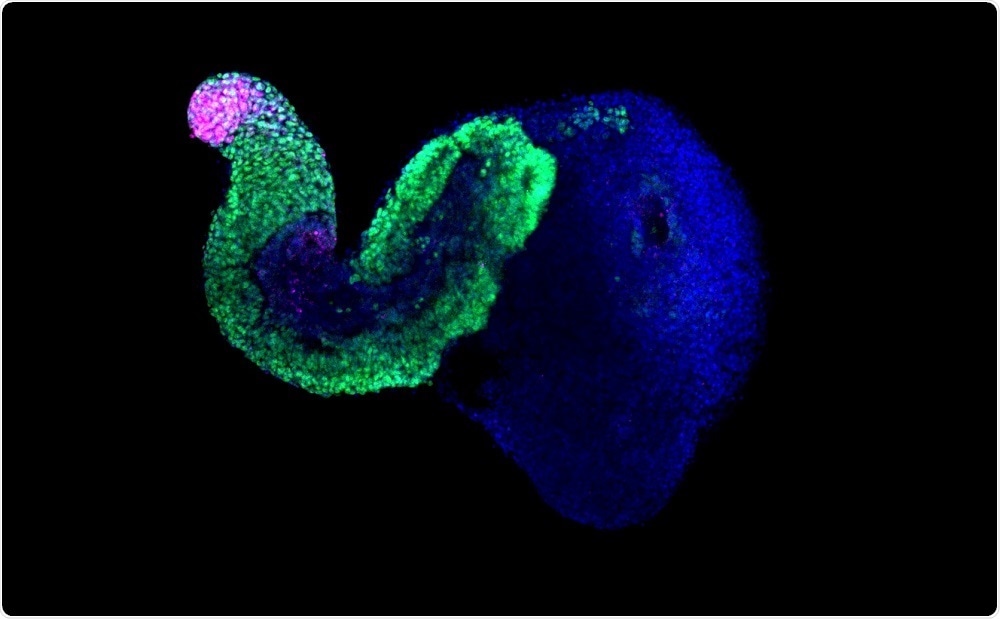Researchers at the University of Geneva, the University of Cambridge and the Federal Institute of Technology Lausanne have created murine pseudo-embryos that form the three major axes of the body.
 Image Credit: Mehmet Girgin / EPFL
Image Credit: Mehmet Girgin / EPFL
The artificial embryos could provide an alternative to using mammalian embryos in animal experiments, in accordance with the 3Rs principle.
This principle, which has become established internationally as the ethical approach to animal experimentation, aims to “r”educe the amount of animals used, “r”efine experimental conditions to improve animal welfare and “r”eplace animal methods with alternatives.
The researchers say these new pseudo-embryos, which are formed from mouse stem cells, have the ability to form the anterio-posterior, dorso-ventral and medio-lateral axes of the body.
The development of the axes is controlled by a gene expression program that is similar to that found in mammalian embryos.
The artificial embryos, referred to as “gastruloids,” therefore offer great potential for studying the early stages of healthy or pathological development in mammals.
Studying the mechanisms underlying the formation of mammalian embryos has been hindered by difficulty in obtaining them.
As reported in the journal Nature, genetics professor Alfonso Martinez Arias recently found that murine stem cells can organize themselves into 3D aggregates that continue to elongate in vitro and display the different features of the early stages of embryonic development.
Gastruloids form structures similar to the posterior part of the embryo, whose development program is somewhat different from that of the head"
Leonardo Beccari, Co-first Author
The artificial embryos express genes characteristic of the different types of progenitor cells involved in the development of tissues.
The complexity of gene expression profiles increases over time, with the appearance of markers from different embryonic cell lineages, much like the profiles observed in control embryos.”
Naomi Moris, Co-first author
In the future, the gastruloids could in some cases be used to replace the mammalian embryos used in animal experiments.
The gastruloids would be used alongside animal models to reduce the number of animals required for the study of embryonic development.
Source:
https://www.eurekalert.org/emb_releases/2018-10/udg-sco092818.php